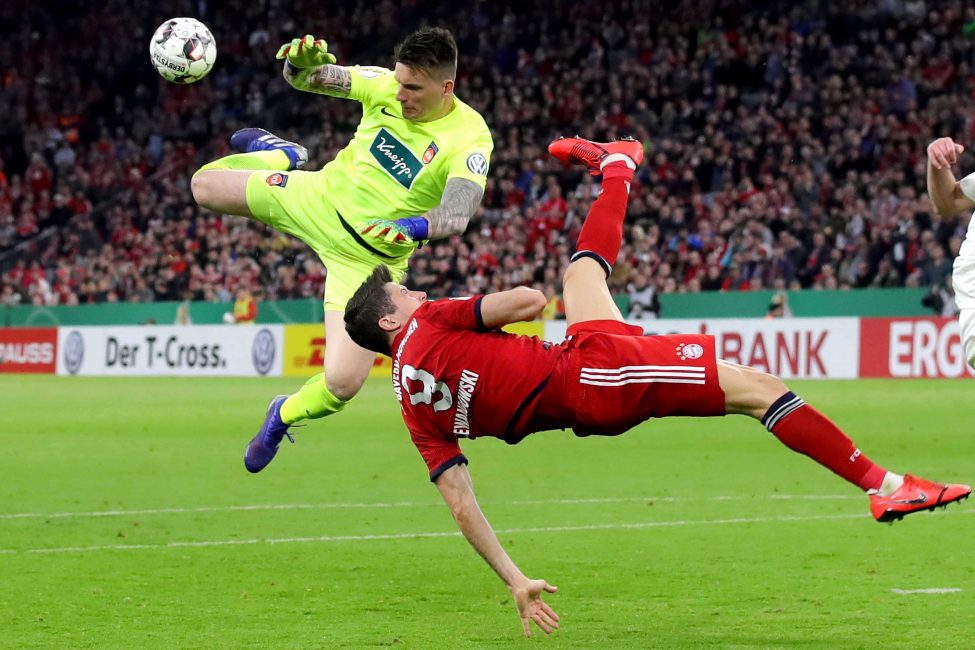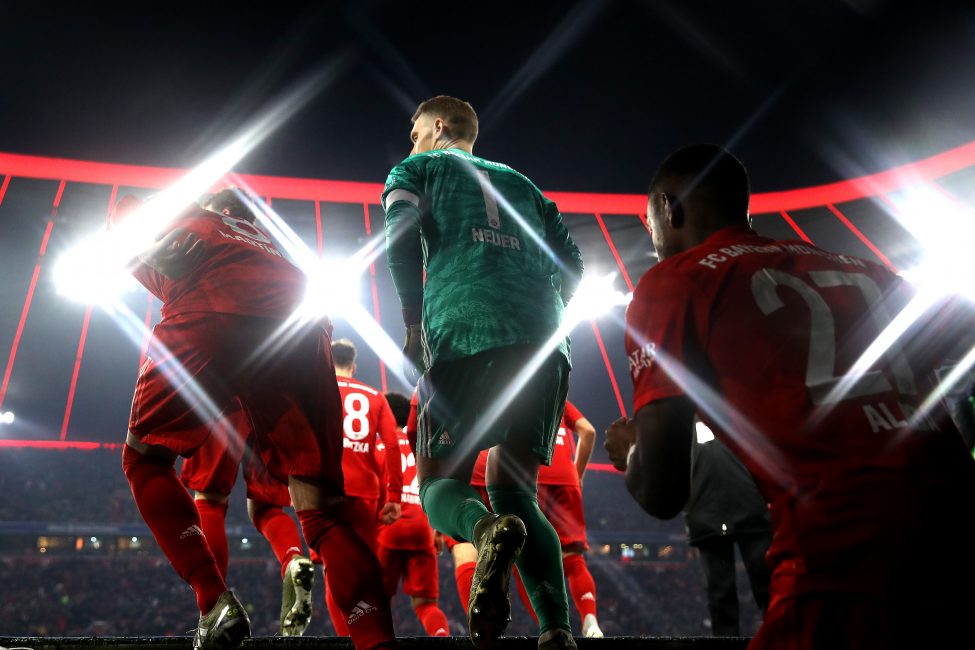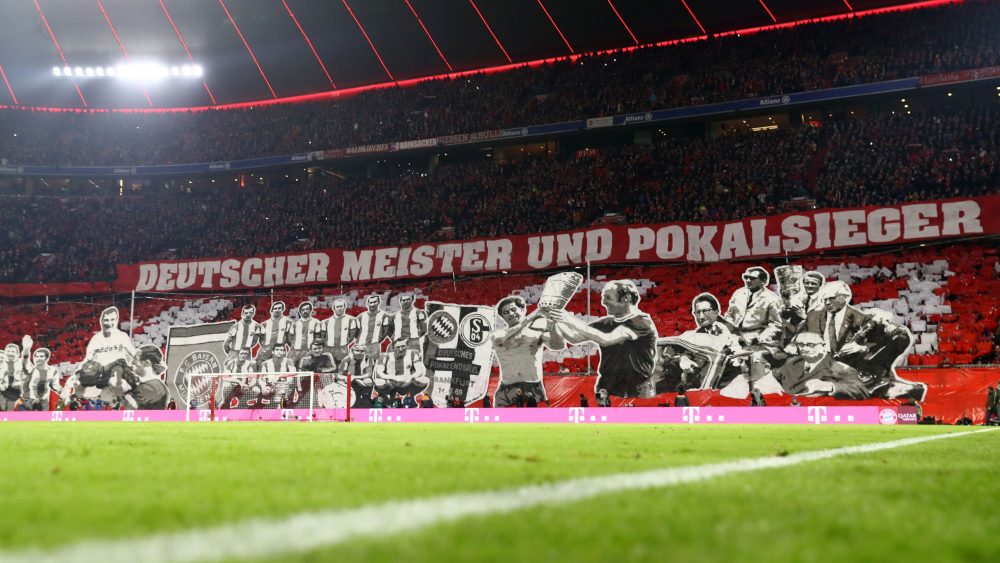“I am the first row of the Südkurve”
“It is my job to inspire and fascinate people with my photos”
How long have you been following FC Bayern as a photographer?
I started my career as a sports photographer in 1990. I cannot any more remember exactly, when I attended my first Bayern game in this function. It must have been 1992 in the Olympic Stadium. The older I get, the more it fascinates me for how long I have actually known so many players and officials at the club.
Most of them I have already photographed during their active time as players: I have been photographing Lothar Matthäus since 1990, Oliver Kahn since as early as his time at Karlsruhe, Hassan Salihamidžić at HSV, Bayern, and later Wolfsburg.
Since 2007, I have been living in Bavaria and regularly accompany FC Bayern and the German national team.
Do you cover other clubs and sports as well?
Through my job at Getty Images as a permanent sports photographer, I photograph all kinds of sports. I am fortunate to have photographed 14 Olympic Games, 12 World Championships in Athletics, 15 Champions League Finals and 5 FIFA World Cups for Getty Images.
Are you a fan yourself, or does your job give you a certain distance from the action on the pitch?
First of all, it is my job and my obligation to inspire and fascinate the world with my photos. This never works without passion and a genuine interest in what I shoot. In the Allianz Arena, I sit in front of all the spectators. In a sense, I am the first row of the Südkurve!
In 30 years of sports photography I have learned that life is like sport – or the other way round, sport is like life: Always wanting to win but being able to lose. We sports photographers are in a daily competition with one another for who takes the best, fastest and “hottest” photo at the respective event or in the 90 minutes of a match. I want to deliver the maximum for me and my team.

(Image: Alexander Hassenstein/Getty Images)
I take my pictures on the field all by myself, but I have a team at Getty Images, who work with me to process my photos and make them available to our customers worldwide. Lone fighter and team player. Like in sports, like in life.
Over time I have also built up friendships with several athletes. We have come to know each other well and often also share information about our private lifes. And that often makes me suffer along with them when things don’t work out …
How can we imagine a “normal” matchday with you?
For sports photographers it is part of their job to travel a lot, which is not always easy with our extensive equipment.
On a matchday in the Allianz Arena with kick-off at 3:30 p.m., I arrive at the stadium at around 1 p.m.. Then it is time to set up the equipment and take the first preview pictures of the teams’ entry onto the pitch and warm-up. From about 3 p.m. on, I am connected online with my Getty Images team, which most of the time is based in London. From there they centrally edit and process all images of our Getty Images photographers from all the matches of the Bundesliga, the Premier League and other international leagues live and forward them to our customers or upload them to our website.
After the match I edit all other, so far irrelevant images in the Allianz Arena with more time and without the previous urgency of a live situation. Usually I leave the arena around 9 p.m. after having been there a total of eight hours.
You have mentioned the cooperation with the team in London. How does that work in practice?
Let’s take an example: Robert Lewandowski takes a penalty kick in the 70th minute. I photograph his shot and his goal celebrations.
After he shoots and (hopefully) celebrates, I quickly select the best picture from the shooting and celebration series on the camera display, record a short voice description for each picture, and send them directly from the camera over WiFi or 4G to my editor in London. Within seconds, he receives the pictures on his computer alongside numerous others that are shot at parallel games, photoshops my pictures and labels them. For this he uses the text from the voice descriptions I have attached to the pictures (“Bayern number 9 scores the first goal from a penalty”, “Bayern Number 9 celebrates scoring first goal” etc.).
The team of editors cannot always follow all matches live or know every player – so the description is very important. In my work, speed is of the essence, as it is in the subsequent post-processing stages. Together we are a team – and want to win. Our pictures are available online in less than a minute. In a sense, Robert scores and celebrates together with our customers almost in real time.
“The left eye scans the surroundings while the right eye looks into the camera”
How much of a match does register with you, or is that even possible looking through a lens?
I am aware of everything: What is happening on the pitch and also the movements on the bench – sometimes I even have time to look what is going on in the stands. Because there is stuff there that has to be captured too, for example when the fans perform a choreography or when they react do something on the pitch or wave banners. In addition, I also sometimes take a glimpse at the video screen to know what is happening in other stadiums and to keep track of the time.
The left eye scans the surroundings while the right eye looks into the camera.

(Image: Alexander Hassenstein/Getty Images)
Over all my years on the job, my eyes and instincts have sharpened as to where something is happening or could happen. It is important to me to be able to offer our clients not only the journalistically highest standard of photography, but also to always try to shoot the “special picture”. To have the goals and reactions live and also in next day’s papers is a must, to on top of that bring good features, clean shots of individual actions by the players and meaningful portraits of them home from the game is what I strive for. To have both at once is Champions League – and that is my ultimate goal and that of all of us for every game.
At the end of the day, when everything has calmed down, I always put together a series for my Instagram account @alexanderhassenstein and our Getty football account @gettyfc. This is always a collection of my best pictures of the game to round out the matchday.
How many photos do you produce on such a day and how long does it take to sort through all these pictures?
A good day’s work yields about 1.500 pictures. 200 of them are used on our website. Around 9 p.m., I call it a day. The stadium lights are off. Most of the time the only people who are left are the greenkeepers on the pitch to maintain the lawn.
Are you free to pick and choose the games and sports events you would like to visit, or are you sent somewhere by someone?
We are a team and I am very lucky to be assigned to other sports events besides football. We coordinate the assignments centrally. We cover every Bundesliga match, I mostly shoot at Bayern games, but sometimes I am also in Augsburg.
In terms of my coverage of Bayern, it is not only the match itself, but also training sessions, press conferences and everything else that happens on the field and outside the Allianz Arena. I also take pictures of Bayern’s women’s team and the basketball team.
Now in winter I also cover a lot of winter sports. I was just at the Four Hills Tournament and now I am going to the biathlon. On 25 February, 2020 I will be on the Streif at 11 a.m. at the Hahnenkamm downhill race and afterwards at 6:30 p.m. in the Allianz Arena for the game against Schalke.
“You get very close to the action”
How close are you to the club or the players, especially when travelling?
I am are very close, not only because we journalists are often allowed to fly on the same plane as the club on international trips. But it is also very pleasant to see that we all remain normal people and treat each other fairly, friendly and respectfully – whether we win or not.
In addition, on every Champions League away trip, the press department of FC Bayern always invites the accompanying journalists to a joint dinner the evening before the match. A nice gesture by the colleagues from Bayern’s press department and a very nice evening for all of us.
How does your profession differ from that of a writing journalist? Is there any contact between you two?
Yes, very intensive contact and great friendships. It is strange: when you are very close and see everything live on the field through a lense in two dimensions, you sometimes only really see what is happening right in front of you. We have no slow motion. Often something is hidden so that you cannot see a lot of things, let alone take pictures. I have missed goals, it has happened…

(Image: Alexander Hassenstein/Getty Images)
At the same time, I am always thinking about the technology to check if the pictures are uploading correctly and everything is running smoothly.
Sometimes, when things are particularly turbulent and everything happens at once, my first question after the game to my friends or colleagues in the press room is what the story of the game was. Just to make sure I have everything covered.
Are there also picture requests from players?
Yes, there are, and very often with respectful thanks by the players for special photos. A source of great joy for me!
What equipment do you use and how has it changed over the years?
I take pictures with a Canon camera and I have the honour to be a Canon Ambassador. I have learned the profession of a photographer as a craft complete with vocational training and everything that goes with it. When I began, sports photography was still often black and white photography on negative film. After the matches, we quickly drove to the office, developed the films and pictures and took them to the post office or dispatched them via night train. They were at the newspapers’ offices the next day, and in the papers the day thereafter.
Today I can look at my photo of Robert Lewandowski’s penalty kick and his goal celebration on the social media channels of FC Bayern or other websites just a few seconds after they happened on the pitch…
We would like to thank Alexander Hassenstein for the interview and his interesting insights into life as a sports photographer. If you would like to follow Alexander further, we recommend you follow him on his social media accounts.









